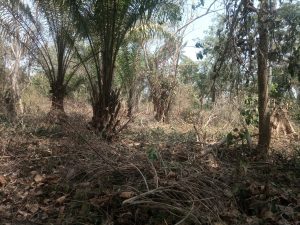In the Philippines today, farming is one of the important aspects of the economy, it is known to contribute over 14% of the total nation’s Gdp.
However, over the last 2 decades, there has been about a 10 % reduction in GDP contributed by the agricultural sector. Reasons not farfetched from poor remuneration and lack of government support for the sector.
So to get started with profitable farming in the Philippines, you need to acquire farmland, embark on both livestock farming and crop cultivation, and market your products outside the coast of the country.
So in this guide, we will be giving information on how you can venture into profitable agriculture in the Philippines and all you need to know.
How To Start A Lucrative Farming In the Philippines Step By Step Guide
Follow the guide below to start farming in the Philippines;
Step 1: Identify the size and type of farming you want to start
Crop farming and animal husbandry are two of the most common agricultural activities, although there are many other options available.
That said, we think you’re here to cultivate crops, that is what we will focus on entirely in this content. Determine how big or little you want your crop-growing business to be before you get started.
You can start out on a huge or small scale, or even in your own backyard. With this focus, you’ll gain clarity on what to do, how much capital to set aside, and a slew of other things.
Read Also: How To Start Farming Business In Nigeria [PDF Guide]
Step 2: Go for training
Depending on the usual practices in your chosen area, you may need to look into them further by taking courses online and reading up about the crop you want to venture into.
Whether you want to start a tomato farm or a poultry farm, the best agricultural methods for each are different, therefore you should do further research on the type of farming you want to do.
In the event that you need assistance in a particular area, please let us know in the comments section. Experts in farming can help you choose the best techniques for any region you’ve selected.
Read Also: How To Start Farming In Ghana Step By Step Guide
Step 3: buy your farmland
Before beginning a farming career, you must first purchase agricultural land. There is a direct correlation between how large you want your farm to be and how much land you will need.
Anywhere from one acre to many acres may be needed for your project.
Step 4: Deforest the Land

Your next task is to clear the farmland of all trees, grasses, shrubs, and forests. You can utilize either a machine or human labor to do this task.
The size of your farm will play a role in your decision, as manual labor is best suited for farms with a total area of 1 to 3 acres. However, if you wish to acquire or plan to buy more than 5 acres, it is best to employ a machine.
After clearing, burn the brush to get rid of unwanted shrubs and weeds, which will make farming more efficient and less time-consuming on the farm.
Step 5: Start making heaps/ridges
In some cases, you may not need to form ridges if you’re planting cocoa, palm, cashew, mango, rice, and many other types of crops.
It’s possible that you’ll need to form ridges to better support the root systems of your crops if you’re growing things like tomatoes, yams, millets, and groundnuts, for example.
Step 6: Start Planting your desired crops
During this period, you can begin planting your desired crops. Make sure you buy the greatest possible strain of the crop you intend to grow. ” If you need any seed, feel free to ask in the comments area.
Profitable Farming To Start In the Philippines
Following is the list of crops and animals you can start in the Philippines that will increase your income.
Tomato farming:
You can start tomato farming in the Philippines and set up a local company that can package it into processed ones. It can be processed into tin tomatoes, sachet tomatoes, and many other forms that can be exported out of the country.
Palm Farming:
You can venture into the growing and processing of palm fruits. Palm fruits are grown for their seed which is in turn processed into red oil which is in high demand. The beauty of this plant is that it can grow on any soil type.
Goat Farming:
You can start goat farming in the Philippines to export outside of the country.
Poultry farming:
Poultry is one of the most profitable ventures to start anywhere in the world. So, you can venture into this either for meat production (Broilers farming) or egg production (Layers farming)
Piggery:
The demand for pork meat and its derivatives are in high demand, Philippines farmers can leverage this and start raising pigs for exportation.
Cattle Ranching:
The demand for milk and dairy produce is never going to be low, so, you can level leverage on this and start raising cows for meat production and milk processing.
Major problems of Agriculture/farming in the Philippines
Low Diversification:
Farmers in the Philippines lack the ability to diversify into growing crops and livestock that are in high demand even in the neighboring countries. Famers limit their farming scope to the traditional rice, coconut, corn, and others that are locally consumed.
Lack of access to funds:
Most farmers who are ready to farm in the Philippines lack access to capital to venture into it, or have a fund that is not sufficient for running and setting up a proper farm.
Lack of Agricultural input:
Most input that is needed for standard farming such as hybridized crops, and improved breed of animals are not readily available for farmers.
Low literacy level:
Most farmers in the Philippines are illiterates, this, in turn, tells in the practices they embark on, the type of seed they plant, and many more.
The solution to problems of Agriculture/farming in the Philippines
Farmers Should learn to grow other plants:
Farmers should learn to diversify into the growth of plants that are in high demand such as cocoa, palm, rubber, cashew nut, and maize. Doing this will expand their capacity for international sales which will increase the country’s GDP and accelerate farmers’ standard of living.
Government Should Make loan Accessible to farmers:
The government should encourage farming habits by making funds and expensive equipment available for farmers who are interested in farming.
Agricultural awareness program:
Government should set up a body that will sensitize people on the importance of farming, and how to start profitable farming in the Philippines, and also guides them to make a living from farming.
What are the most profitable crops in the Philippines?
According to statistics pineapple and tomatoes are the most profitable and lucrative crops in the Philippines.
Is farming in the Philippines profitable?
Yes, but you must learn to diversify into planting varieties of crops and also venture into animal husbandry.
What is the most profitable crop in the Philippines in 2024?
According to statistics pineapple and tomatoes are the most profitable and lucrative crops in the Philippines.
How much do Filipino farmers earn?
Averagely farmers earn P331.10 in a day.
Why farmers are poor in the Philippines?
Why most Philippines farmers are poor is because of a lack of capacity for diversification, lack of education, economy, and social hullabaloo.
Is buying a farm a good investment Philippines?
Yes, it is a long-lasting and low-risk investment.
What is the biggest problem in agriculture in the Philippines?
The biggest agricultural problem in the Philippines is the lack of diversification. Farmers in the Philippines lack the ability to diversify into growing crops and livestock that are in high demand even in the neighboring countries. Famers limit their farming scope to the traditional rice, coconut, corn, and others that are locally consumed.
Conclusion
In conclusion, in time past, farming has been seen as a poor man’s profession in the Philippines which is against the true potential that is embedded in agriculture. We have done justice to how you can start farming in the Philippines and all you need to know about it.





Hello…
I would to know the following:
1. Do I need to get a business license if I take care 10 cows?
2. I would like to attend a seminar in Sto
Tomas, Batangas. Do you offer one in that location?
Yes you may need to get license, but you may check with your local authorities to get clearer picture